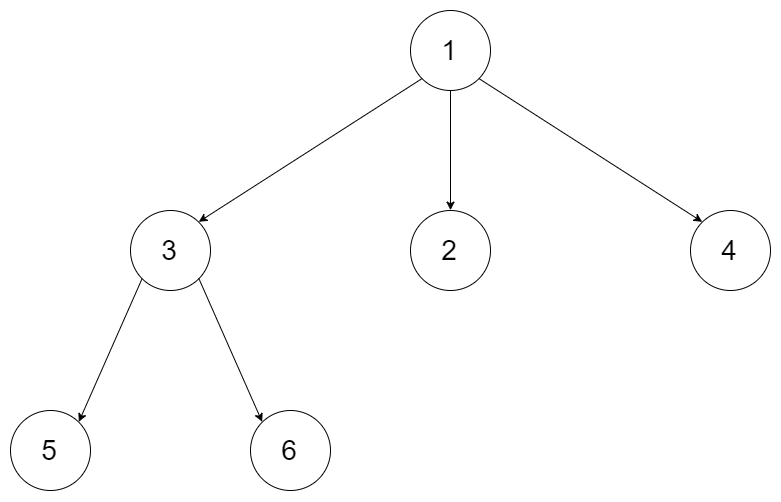590. N-ary Tree Postorder Traversal
Description
Given the root of an n-ary tree, return the postorder traversal of its nodes’ values.
Nary-Tree input serialization is represented in their level order traversal. Each group of children is separated by the null value (See examples)
Example 1:

- Input: root = [1,null,3,2,4,null,5,6]
- Output: [5,6,3,2,4,1]
Example 2:

- Input: root = [1,null,2,3,4,5,null,null,6,7,null,8,null,9,10,null,null,11,null,12,null,13,null,null,14]
- Output: [2,6,14,11,7,3,12,8,4,13,9,10,5,1]
Constraints:
- The number of nodes in the tree is in the range [0, 104].
- 0 <= Node.val <= 104
- The height of the n-ary tree is less than or equal to
1000.
Follow up: Recursive solution is trivial, could you do it iteratively?
Submitted Code
"""
# Definition for a Node.
class Node(object):
def __init__(self, val: Optional[int] = None, children: Optional[List['Node']] = None):
self.val = val
self.children = children
"""
class Solution(object):
def postorder(self, root):
"""
:type root: Node
:rtype: List[int]
"""
stack = []
result = []
if root:
stack.append(root)
while stack:
node = stack.pop()
result.append(node.val) # 루트 → 오른쪽 자식 → 왼쪽 자식 순으로 순회
for c in node.children: # 왼쪽 → 오른쪽 자식 순으로 스택에 추가(역순x)
stack.append(c)
return result[::-1] # 순회 결과 뒤집기
Runtime: 32 ms | Beats 79.43%
Memory: 15.72 MB | Beats 1.90%
스택을 이용한 방법으로, 루트 → 오른쪽 자식 → 왼쪽 자식 순서로 순회한 뒤 이를 거꾸로 뒤집으면 후위 순회가 된다.
Other Solutions
1st
class Solution(object):
def postorder(self, root):
# If the root is None, return an empty list
if not root:
return []
res = []
# Define the DFS function
def dfs(root):
# Recursively call dfs for each child of the current node
for x in root.children:
dfs(x)
# Append the value of the current node to the result list
res.append(root.val)
# Start DFS from the root
dfs(root)
# Return the result list containing node values in post-order
return res
time complexity: 𝑂(𝑛)
space complexity: 𝑂(ℎ)
후위 순회도 재귀 호출로 하면 더 직관적이고 간단하다.



Leave a comment